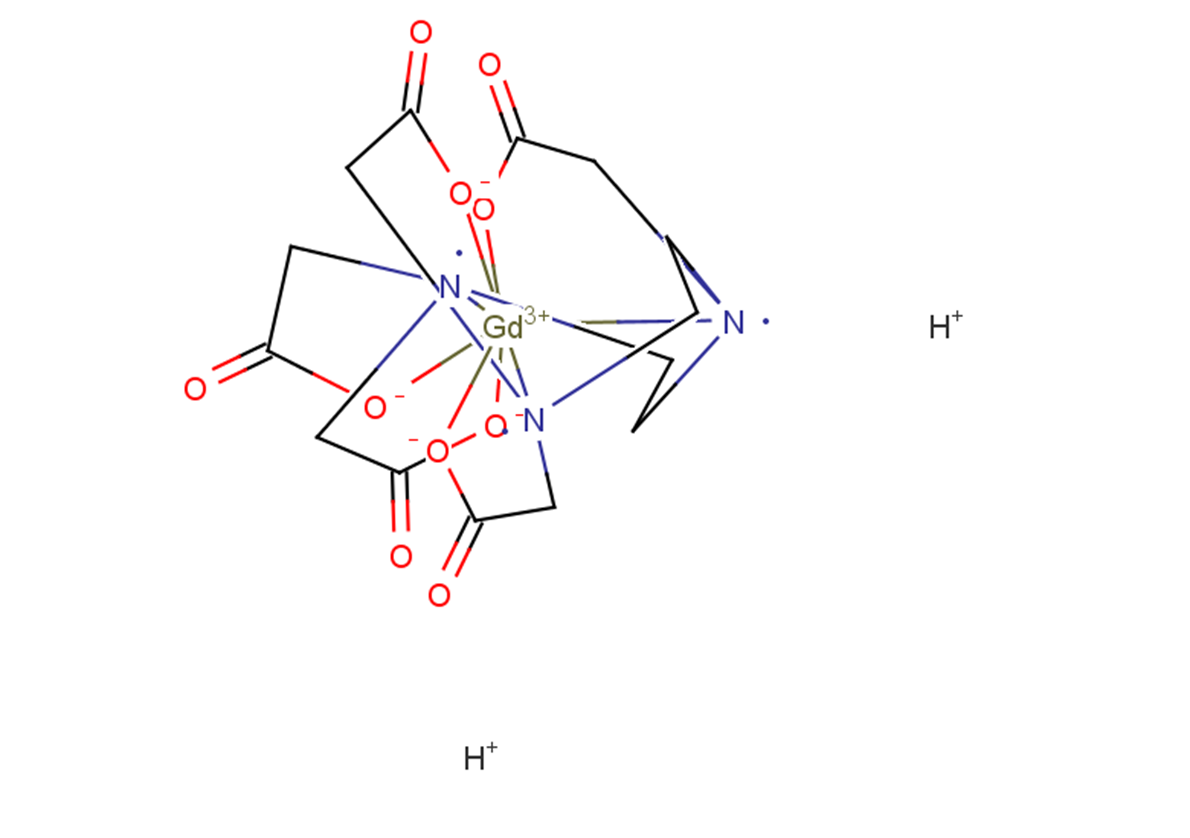
Gadopentetic acid
CAS No. 80529-93-7
Gadopentetic acid( Gd-DTPA | gadolinium complex )
Catalog No. M24804 CAS No. 80529-93-7
Gadopentetic acid (Gd-DTPA) is an paramagnetic contrast agent commonly implemented by a bolus intravenous injection (i.v.) in Dynamic contrast-enhanced MRI (DCE-MRI) studies.
Purity : >98% (HPLC)
 COA
COA
 Datasheet
Datasheet
 HNMR
HNMR
 HPLC
HPLC
 MSDS
MSDS
 Handing Instructions
Handing Instructions
| Size | Price / USD | Stock | Quantity |
| 100MG | 37 | In Stock |


|
| 200MG | Get Quote | In Stock |


|
| 500MG | Get Quote | In Stock |


|
| 1G | Get Quote | In Stock |


|
Biological Information
-
Product NameGadopentetic acid
-
NoteResearch use only, not for human use.
-
Brief DescriptionGadopentetic acid (Gd-DTPA) is an paramagnetic contrast agent commonly implemented by a bolus intravenous injection (i.v.) in Dynamic contrast-enhanced MRI (DCE-MRI) studies.
-
DescriptionGadopentetic acid (Gd-DTPA) is an paramagnetic contrast agent commonly implemented by a bolus intravenous injection (i.v.) in Dynamic contrast-enhanced MRI (DCE-MRI) studies.
-
In Vitro——
-
In VivoAnimal Model:ratsDosage:2 and 5mmol/kg Administration:tail vein injection, single Result:Observed urinary and serum metabonomic recovery but the metabolic effects of high-dosed (5mmol/kg) lasted long.Observed hyperlipidemia after Gd-DTPA injection.
-
SynonymsGd-DTPA | gadolinium complex
-
PathwayOthers
-
TargetOther Targets
-
RecptorOthers
-
Research Area——
-
Indication——
Chemical Information
-
CAS Number80529-93-7
-
Formula Weight547.57
-
Molecular FormulaC14H20GdN3O10
-
Purity>98% (HPLC)
-
SolubilityH2O:100 mg/mL (182.63 mM; Need ultrasonic);DMSO:< 1 mg/mL (insoluble or slightly soluble)
-
SMILESO=C1[O-][Gd+3]23([O-]C4=O)([O-]C5=O)([O-]C6=O)([N](CC[N]3(C5)C6)(C1)CC[N]2(C7)C4)[O-]C7=O.[H+].[H+]
-
Chemical Name——
Shipping & Storage Information
-
Storage(-20℃)
-
ShippingWith Ice Pack
-
Stability≥ 2 years
Reference
1.Wan C, et al. Gd-DTPA-induced dynamic metabonomic changes in rat biofluids. Magn Reson Imaging. 2017 Dec;44:15-25.
molnova catalog



related products
-
mTRP-2 180-188
This peptide is a TRP-tyrosinase-related protein. Its immunization results in effective induction of antitumor immunity.
-
SARS-CoV-2-IN-13
SARS-CoV-2-IN-13 (compound 5) is an analogue of niclosamide, displaying greater stability in human plasma and liver S9 enzymes assay.
-
Anisic aldehyde
Anisic aldehyde is a naturally occurring fragrant phenolic compound? it has significant antifungal activity against Candida including azole-resistant strains.



 Cart
Cart
 sales@molnova.com
sales@molnova.com


